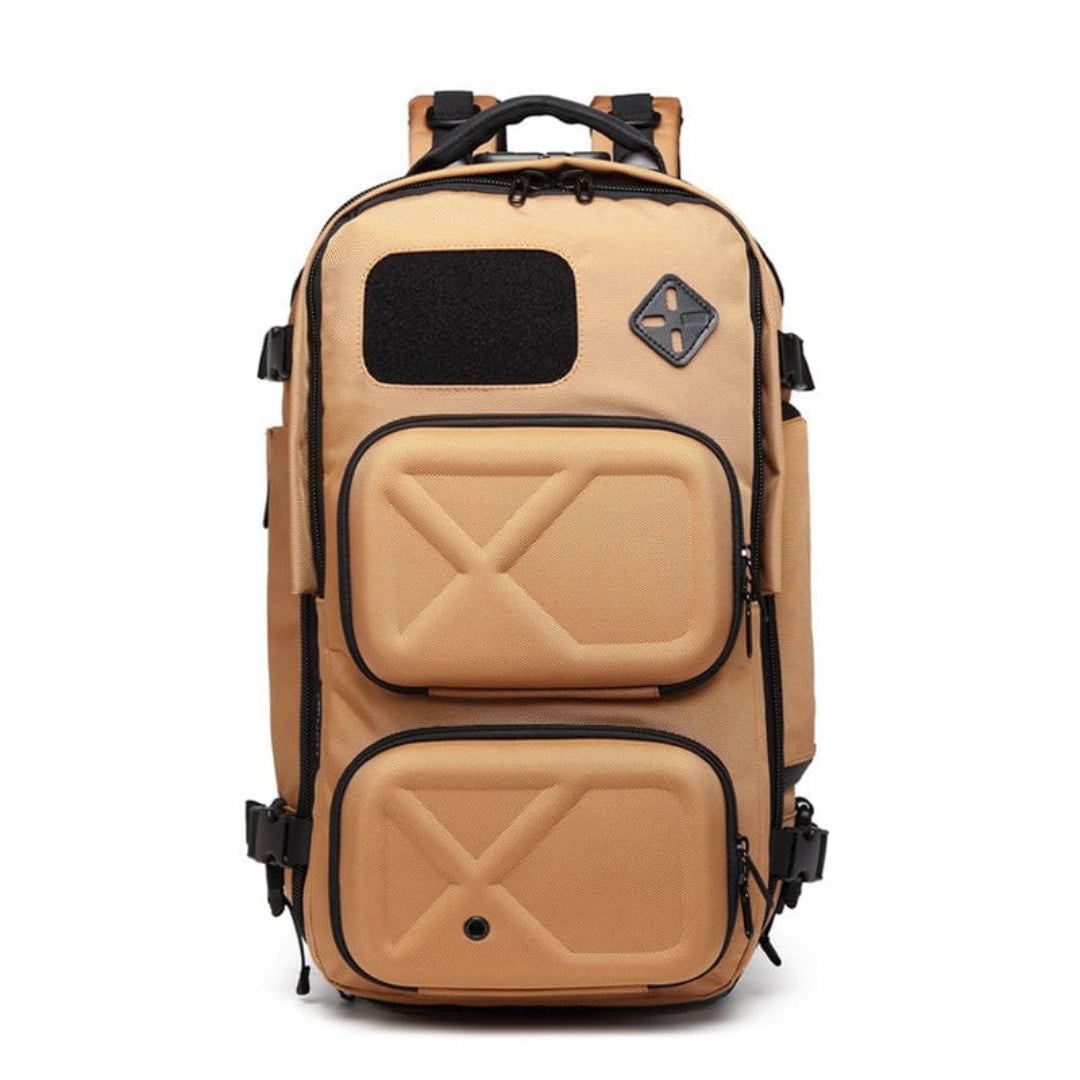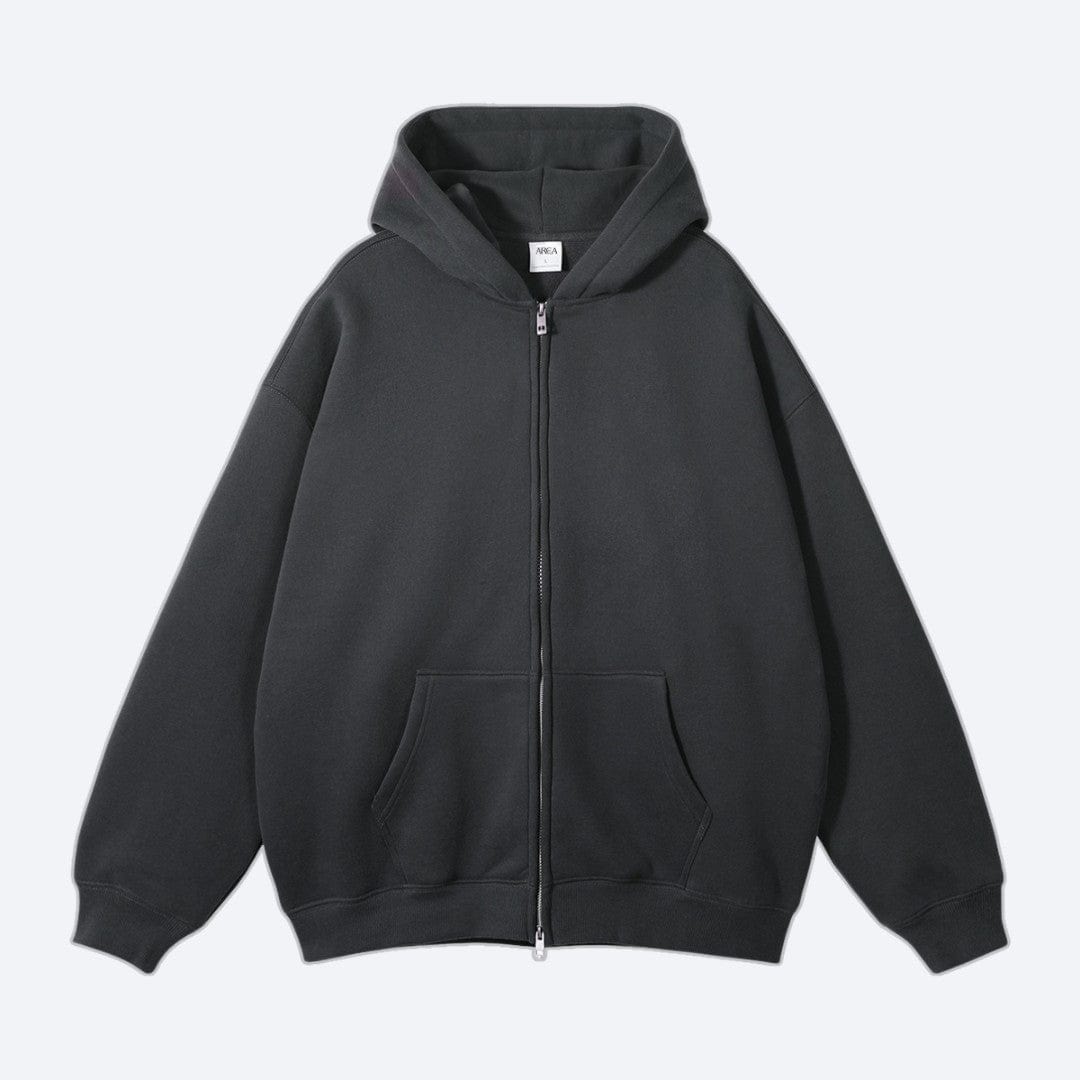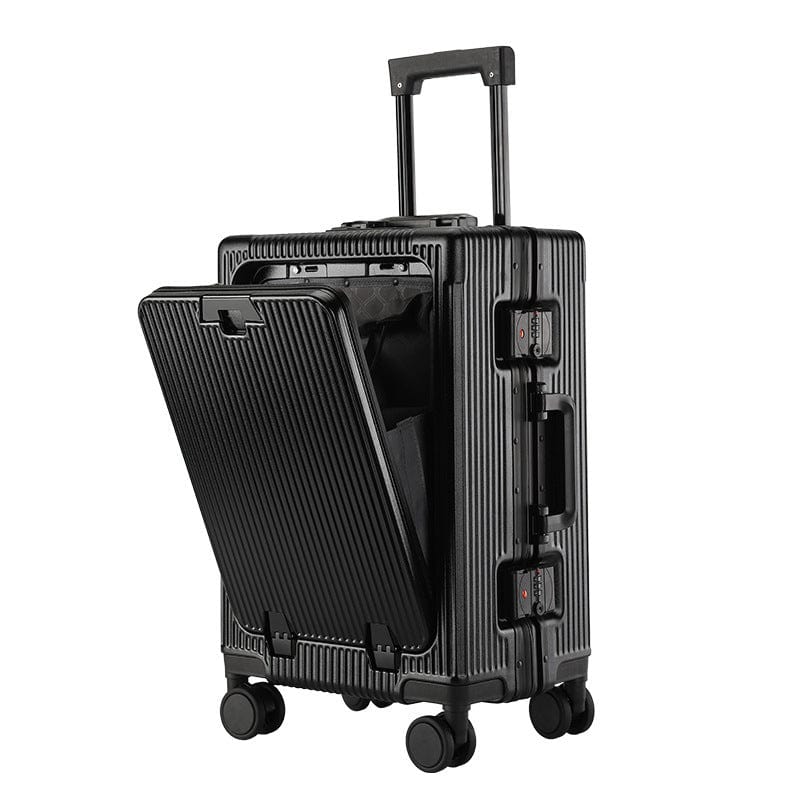Planning a trip to Greece? Whether you're wandering through ancient ruins, sipping coffee at a bustling café, or soaking up the sun on a stunning island, what you wear can make all the difference. Greek fashion for men is all about effortless style that combines comfort with a touch of sophistication. It's not just about looking good—it's about feeling good in the Mediterranean heat while blending seamlessly with the locals.
Think light, breathable fabrics, neutral tones, and versatile pieces that can take you from day to night. In Greece, fitted chinos, linen shirts, and cotton tees are staples, while athleisure and flashy prints are best left at home. The key is striking a balance between laidback and polished, ensuring you're ready for any adventure, whether it's exploring cobblestone streets or enjoying a taverna dinner by the sea.
Why the Arca 40L Backpack Is Your Ideal Companion for a Stylish Greek Getaway
Planning a trip to Greece involves more than just booking flights and accommodations; it's about embracing the local culture and style. In Greece, men's fashion leans towards effortless elegance—think breathable fabrics, neutral tones, and versatile pieces that transition seamlessly from day to night. The Arca 40L Travel Backpack complements this aesthetic perfectly. Its sleek design and functional compartments make it easy to pack essentials like linen shirts, fitted chinos, and comfortable footwear, ensuring you're prepared for exploring ancient ruins by day and enjoying seaside dinners by night. Lightweight and carry-on friendly, the Arca 40L ensures you travel in style without the hassle of checked luggage.
What Do Men Wear in Greece? A Guide to Greek Style Without Looking Like a Tourist
Men in Greece master the art of understated elegance by combining timeless style with a relaxed Mediterranean flair. Focus on breathable fabrics and neutral colors to adapt to Greece's warm climate while blending in with the locals.
Daytime Attire
Choose lightweight clothing that balances comfort and style for daytime activities. Shorts or chinos in beige, olive, or gray pair perfectly with cotton or linen shirts. Opt for well-fitted polo shirts or plain tees for a casual look, avoiding overly loose or baggy options. Complete the outfit with loafers or sandals and minimalist accessories like a watch or leather bracelet.
Evening Wear
For nights out, lean towards smart yet relaxed outfits. Tailored trousers or fitted dark jeans paired with a crisp shirt or modern polo are ideal. Incorporate a blazer or light jacket during cooler evenings. Add a refined touch with accessories such as a sleek belt or subtle pocket square, ensuring your look remains effortlessly polished.
Beach Style
Beachwear should mix practicality with Greek charm. Style colorful swim shorts with breathable cotton shirts or sleeveless vests. Sunglasses and a straw hat not only enhance your look but also provide sun protection. Stick to comfortable flip-flops or espadrilles for navigating sandy shores.
Key Greek Style Principles
- Neutral Colors: Prioritize black, navy, beige, and gray over loud prints or neon hues.
- Fitted Cuts: Slim, relaxed fits enhance your silhouette without looking too tight.
- Light Layers: Even in summer, locals often use a breathable overshirt to refine their look.
- Avoid Athleisure: Reserve gym shorts and hoodies for workouts, not casual outings.
- Minimal Accessories: Small details like stylish watches or understated belts complete your outfit harmoniously.
By dressing with intention, you'll effortlessly integrate into Greece's stylish yet laidback culture.
Essential Packing List for Men Traveling to Greece
Clothing Essentials
- Breathable Shirts: Pack a mix of linen and cotton shirts in neutral or pastel colors. These materials keep you cool while offering a polished look.
- Lightweight Pants: Include fitted chinos or linen trousers for versatility. Long trousers are necessary for visits to religious sites or upscale restaurants.
- Shorts: Choose tailored shorts in neutral shades for casual outings and warm days. Avoid baggy athletic styles for a more refined look.
- Swimwear: Bring two to three pairs of well-fitted swim shorts in vibrant or muted hues for beach days and poolside relaxation.
- Evening Wear: A crisp button-down shirt paired with dark-fitted jeans or tailored pants works well for evening dinners or nightlife.
Footwear Must-Haves
- Comfortable Sneakers: Ideal for walking tours or city exploration, especially in places like Athens where cobblestones are common. Stick to versatile, stylish designs.
- Sandals or Loafers: Perfect for beachside walks or casual evenings. Opt for leather or high-quality materials for a blend of comfort and style.
- Lightweight Dress Shoes: Essential for formal dinners or high-end restaurants where a polished appearance is appreciated.
Travel Accessories
- Sunglasses: Invest in UV-protected sunglasses to guard against the strong Greek sun while elevating your outfit.
- Hat: A straw hat or baseball cap shields your face during outdoor activities and pairs well with summer attire.
- Day Pack: A small, lightweight bag for essentials like water, sunscreen, and a guidebook.
- Smartwatch or Classic Watch: A simple timepiece adds sophistication to your outfit without being flashy.
Additional Essentials
- Light Jacket or Sweater: Evening temperatures may drop, especially in coastal areas or islands, making a light layer useful.
- Undergarments and Socks: Pack breathable options suitable for hot weather. Crew socks are practical for sneakers, and no-show socks pair well with loafers.
- Travel-Friendly Toiletries: While many essentials are readily available in Greece, bring any specific skincare, shaving, or medications you may require.
Efficiently packing these items ensures you're well-prepared for exploring Greece's landmarks, relaxing on its beaches, and immersing yourself in its vibrant culture.
What is the weather like in Greece?
Greece experiences a Mediterranean climate with distinct seasonal variations, affecting what you should wear during your trip. Summers, from June to August, are hot and dry, with temperatures often exceeding 86°F (30°C). Coastal areas benefit from cooling sea breezes, but inland regions can feel significantly hotter. Dressing in light, breathable fabrics and choosing loose-fitting clothing is essential during these months.
Spring (March to May) and fall (September to November) offer mild and pleasant weather with temperatures ranging from 59°F to 77°F (15°C to 25°C). These transitional seasons are ideal for layering due to fluctuating conditions. Rain showers can occur occasionally, so packing a lightweight waterproof jacket or coat helps you stay prepared.
Winters in Greece, spanning December to February, bring cooler temperatures, particularly in inland and mountainous regions. Coastal areas range from 50°F to 59°F (10°C to 15°C), while northern parts, such as Thessaloniki, can drop below freezing. Snow is common in the mountains and northern regions, making warm layers, scarves, gloves, and a waterproof jacket necessary. Coastal winds can also make evenings chilly, even on popular islands like Santorini.
Rain is frequent between November and March, with higher chances in winter months. Packing appropriate footwear, such as waterproof shoes, ensures comfort while navigating wet streets. Greece's climate shifts subtly by region, requiring strategic wardrobe choices for optimal comfort and functionality during your visit.
What to Wear in Greece for Men in Spring & Fall
Spring and fall in Greece have mild temperatures, ranging from 50°F to 68°F (10°C to 20°C) in spring and 59°F to 77°F (15°C to 25°C) in fall. Dressing in layers ensures you're prepared for the shifts between warm afternoons and cooler mornings or evenings.
Essential Clothing for Spring and Fall
- Jeans or Chinos
Choose slim, breathable options in dark or neutral tones like navy, beige, or olive. These are versatile for city walks and casual dinners.
- T-Shirts and Long-Sleeved Shirts
Pack a mix of lightweight, plain tees and fitted long-sleeved shirts. Neutral colors dominate, while subtle patterns can add variety.
- Light Jacket or Cardigan
A lightweight jacket, cardigan, or even a casual blazer works well for layering when temperatures drop.
- Waterproof Gear
A waterproof jacket or coat is essential, especially in case of unexpected rain during fall.
Footwear and Accessories
- Closed-Toe Shoes
Stylish yet comfortable sneakers or loafers suit cobblestone streets and casual outings. Opt for waterproof pairs to handle rainy days.
- Warm Socks
Breathable cotton or thermal socks keep you comfortable in cooler weather.
- Accessories
Sunglasses and a wide-brimmed hat protect you from lingering sun during spring. In fall, add a scarf for warmth and style. A compact umbrella helps if rains are expected.
By combining adaptable layers and practical accessories, you’ll remain comfortable and stylish while embracing Greece’s dynamic charm in spring and fall.
What to Wear in Greece for Men in Summer: Stay Stylish, and Avoid Melting
Hot, dry summers in Greece demand clothing that keeps you cool while maintaining a polished appearance. Choose lightweight, breathable fabrics such as linen, cotton, or lightweight blends to stay comfortable. Linen shirts in light colors like white, beige, or pastel shades pair perfectly with tailored shorts or light chinos. These options allow airflow and reduce heat retention during long, sunny days.
Stick to neutral tones and avoid flashy prints for a more timeless Mediterranean look. Dark neutrals like navy, gray, and olive work well with light tops, offering contrast and versatility for mixing and matching. Pair a well-fitted plain tee or a short-sleeved button-down shirt with neutral-colored chino shorts for daytime outings.
Bring a wide-brimmed hat or a cap with UPF protection to shield your face and scalp from the sun. Sunglasses with UV protection are essential, and a lightweight, long-sleeved shirt with built-in UV defense is a smart addition for added sun protection. Breathable socks and comfortable sandals or loafers round out your footwear for casual daywear.
For evenings marked by taverna dinners and nightlife, swap your shorts for fitted linen trousers or dark chinos. Match them with a crisp, lightweight button-down shirt or a fitted polo. Comfort meets class with leather loafers or dress sandals. A light blazer or a linen jacket serves as an optional layer when the coastal breeze picks up. Keep accessories minimal and refined, such as a classic watch or a small leather belt.
What to Wear in Greece for Men in Winter: Stay Warm and Pack Smart
Winter in Greece is mild but damp, with temperatures ranging from 41°F to 59°F (5°C to 15°C). Pack versatile, weather-appropriate clothing to stay comfortable during your trip.
Clothing Essentials
- Jeans or trousers: Choose slim or relaxed fits in dark, neutral tones for style and practicality.
- Sweaters or jumpers: Mid-weight wool or fleece materials provide warmth without bulk.
- Waterproof jacket: A lightweight, insulated or water-resistant layer is crucial, especially for rainy days or colder regions.
- Thermal layers: Base layers or thermal tops add extra insulation during outdoor activities.
- Scarves and gloves: Opt for lightweight wool or fleece accessories to protect against chilly breezes.
Footwear
- Closed-toe shoes: Waterproof sneakers or leather boots are essential for navigating cobblestone streets and wet conditions.
- Thermal socks: Merino wool socks regulate temperature and keep your feet dry and comfortable.
Accessories
- Wool beanie: A simple knit beanie retains warmth in colder settings.
- Sunglasses: Winter sun remains bright, so UV-protected sunglasses are a travel must-have.
- Lightweight scarf: Adds warmth while staying packable for travel.
Practical and layered clothing ensures you're prepared for Greece's winter climate, whether you're exploring Athens or hiking in cooler mountain areas.
Dos and Don'ts of Men's Fashion in Greece
Dos
- Choose breathable fabrics
Opt for linen, cotton, or lightweight blends. These materials keep you cool in the Mediterranean heat and ensure comfort during city and beach explorations.
- Stick to neutral tones
Incorporate colors like beige, navy, olive, and gray for timeless and versatile outfits. Neutral tones blend well with local styles and are easy to pair.
- Pack versatile clothing
Include tailored shorts, chinos, and button-down shirts. These pieces transition seamlessly from daytime sightseeing to evenings at tavernas.
- Carry light layers
Bring a cardigan, blazer, or lightweight jacket for cooler nights or breezy ferry rides, especially during spring or fall.
- Wear appropriate footwear
Use leather sandals on cobblestone streets, loafers for smart-casual settings, and comfortable sneakers for extensive walking.
- Accessorize minimally
Add sunglasses with UV protection, a classic leather belt, or a stylish watch. Accessories should complement rather than overwhelm your outfit.
- Blend with local fashion trends
Focus on fitted, relaxed styles that avoid overly baggy or skintight appearances. This approach mirrors Greece’s balance of elegance and ease.
Don'ts
- Avoid flashy prints
Skip bold or neon patterns for everyday wear. They clash with Greece’s understated, chic aesthetic.
- Leave athleisure for sports
Keep gym shorts, oversized hoodies, and athletic shoes strictly for workouts. They’re out of place in casual or formal settings.
- Don’t overpack heavy items
Avoid bulky sweaters and heavy outerwear unless visiting in winter. These weigh down your luggage and are unnecessary for most seasons.
- Skip impractical footwear
Avoid flip-flops for city walks and high-tech hiking shoes unless trekking. Both can look out of place during urban and casual outings.
- Don’t wear tourist-style clothing
Steer clear of graphic tees, cargo shorts, and fanny packs. Instead, embrace elevated casual styles to blend with local culture.
- Avoid excessive accessories
Choose subtle pieces over loud jewelry or layers of bracelets. Balance is key in Greek fashion.
- Don’t ignore weather variations
Prepare for unexpected rain in spring and fall or chilly nights year-round. Ignoring the climate can lead to discomfort.
What to Wear in Greece for Men at the Beach & Islands
Prioritize comfort and style when dressing for Greece's beaches and islands. Light, breathable fabrics like linen and cotton are essential for staying cool under the Mediterranean sun. Opt for neutral tones or soft pastels to complement Greece's coastal vibe.
- Swimwear: Pack two pairs of swim trunks made from quick-drying materials. Choose one in a solid color and another with a subtle pattern for variety. Avoid overly flashy designs to match the understated local style.
- Shirts: Lightweight shirts like linen or breathable cotton tees work well for transitioning from beach to taverna. For added charm, consider short-sleeved button-downs in neutral or light colors.
- Cover-ups: Bring a loose-fitting linen overshirt or kaftan for layering over swimwear. This adds coverage while packing light.
- Footwear: Comfortable footwear is crucial for navigating rocky trails and uneven terrain. Stick to Greek leather sandals, espadrilles, or lightweight sneakers for strolls. Aqua shoes are recommended for accessing rocky beaches or snorkeling spots.
- Accessories for Sun Protection
The Mediterranean sun is intense. Ensure you pack these key accessories for comfort and safety:
- Sunglasses: Choose polarized sunglasses with UV protection to shield your eyes.
- Wide-brimmed hat: A straw hat or lightweight cap adds style while protecting against sunburn.
- Sunblock: Use a high-SPF sunscreen to prevent skin damage.
Functional clothing and versatile accessories keep you comfortable as you explore Greece’s picturesque beaches and islands.
How to Dress for Greek Nightlife: Bars, Clubs, and Restaurants
Men heading out for Greek nightlife benefit from classic, fashionable attire. Opt for tailored trousers or dark-fitted jeans paired with a crisp, button-down shirt or a trendy polo. Polished loafers or leather shoes work well to complete the look. For warmer summer evenings, consider lightweight linen shirts in neutral tones for comfort and style. Accessories like a minimal watch or a sleek belt can elevate your outfit.
Nightclubs in destinations like Mykonos prioritize high style. Wear slim trousers with a sharp blazer and a solid-color shirt to blend with the upscale vibe. In casual island spots or gastrotavernas, smart-casual looks such as chinos with a short-sleeve shirt or a well-fitted tee are ideal.
Dress codes differ by venue. Upscale restaurants in Athens or glamorous locales in Santorini may require more formal attire, while family tavernas on islands like Corfu accept smart-casual attire. Avoid overly casual items like sports jerseys, sneakers, or flip-flops unless explicitly allowed.
The Best Travel Backpack for Exploring Greece and Europe
Dressing well in Greece goes hand in hand with smart packing, and a reliable travel backpack can make all the difference. Look for a lightweight, durable option with multiple compartments to keep your essentials organized. A sleek, minimalist design in a neutral color complements your wardrobe while blending seamlessly into Europe’s stylish aesthetic.

Choose a backpack that’s comfortable for long days of exploring but compact enough for easy storage. Features like padded straps, water resistance, and secure zippers add practicality without sacrificing style. With the right backpack and thoughtfully packed wardrobe, you’ll navigate Greece and Europe effortlessly while looking sharp every step of the way.




















